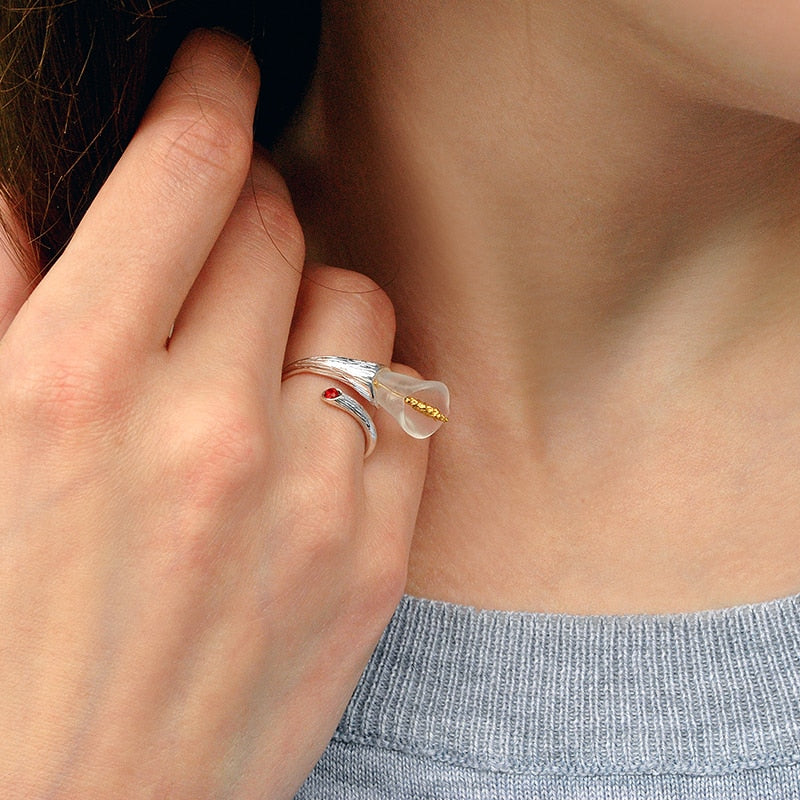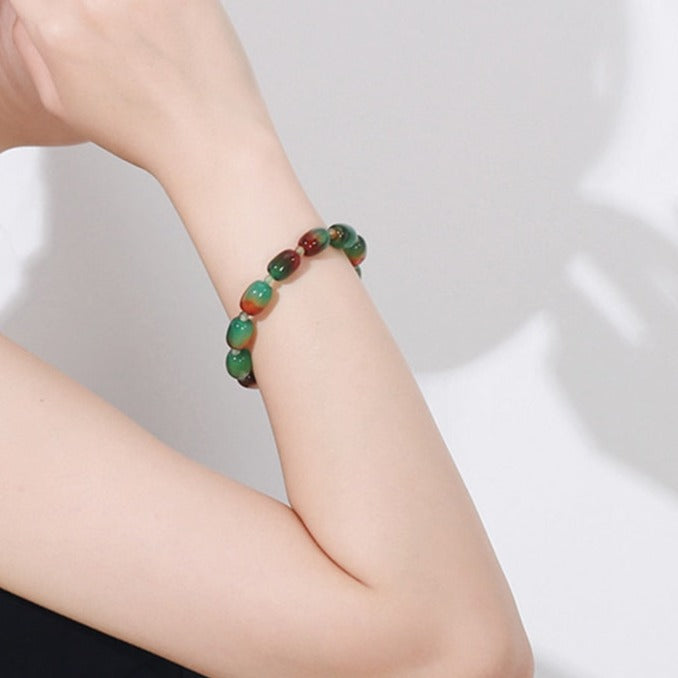Depending on its density, the tiger's eye is opaque or translucent. It seduces with its unique colors, its sparkling variations of brown or copper brown streaked with yellow or gold veins. This surprising blend gives a wild touch to this stone and easily explains its identification with the eye of the great tiger. Certainly less precious than the cat's eye, the tiger's eye has nothing to envy in terms of brightness and shimmer, enhanced by the surprising contrast between its light and dark colors.
The largest tiger eye deposits are found mainly in South Africa. Other countries such as Australia, the United States, India or Burma also produce good quality stones.

History of the eye of the tiger
According to some sources, the tiger's eye may have had the ancient name of wolf's eye if we believe the shades of red that Pliny the Elder attributed to this stone. Other names as curious as they are original could pass for the eye of the tiger such as the hyena, this African stone which, according to legend, comes from the eye of the hyenas, or from the eye of Bellus, an important god of the Babylonian pantheon.
One thing is certain, the tiger's eye was rediscovered around the 19th century and quickly gained a reputation as a precious stone. However, the tiger's eye will soon be the victim of this great success and the discovery of huge South African deposits. The high demand and intensive mining will soon bring its commercial value down to the rank of semi-precious stone.
Today the eye of the tiger is a formidable stone used to make jewelry, accessories and art objects with a unique charm, but also ritual objects, rosaries or statues of Buddha.

Virtue of the tiger's eye
The very name of the tiger's eye already says a lot about its virtues. Protective stone par excellence, it borrows the strength of the tiger it refers to to combat both physical and emotional threats that can affect the integrity of the body and mind.On a physical level, the tiger's eye strengthens, greatly regulates the nervous system and reduces mental fatigue. Keeps eyes healthy and improves reflexes. The respiratory system is also strongly supported by the beneficial action of the tiger's eye. It brings calm and serenity to the rhythm of breathing, also helps to soothe abdominal pains and asthma attacks, and more effectively relieves stress and tension.
Drawing its power from the earth, tiger eye has a beneficial effect on bones and joints, as well as on the spine. Many also recognize its action in relieving osteoarthritis, rheumatism and joint inflammation.
On a spiritual level, the tiger eye recharges the body with spiritual energy and acts as a shield against invasive energies emitted by objects, places and people. The protective action of the tiger eye also includes protection against the negative action of the evil eye, and it also acts as a fairly powerful bulwark against black magic. The stone thus gives a rather strong resistance to negative energies.
Tiger's eye also helps to strengthen a person's will and protects his emotions from ailments and other annoyances caused by overly empathic receptivity. Thus it promotes self-affirmation, awareness of the positive aspects of one's personality and the overcoming of emotional blocks, fears and phobias.
The action of the tiger's eye on the sixth chakra gives it a harmonizing action of the mind. Some also associate this stone with the root chakra, the solar plexus chakra or the third eye chakra.
The most favorable astrological signs for this stone are Gemini, Leo, Virgo and Capricorn. Its star is the sun and its day is Sunday.
To purify and recharge the tiger's eye, a glass or clay vessel containing distilled and lightly salted water should be sufficient. For optimal purification, it is recommended to expose the container containing the stone to sunlight.









